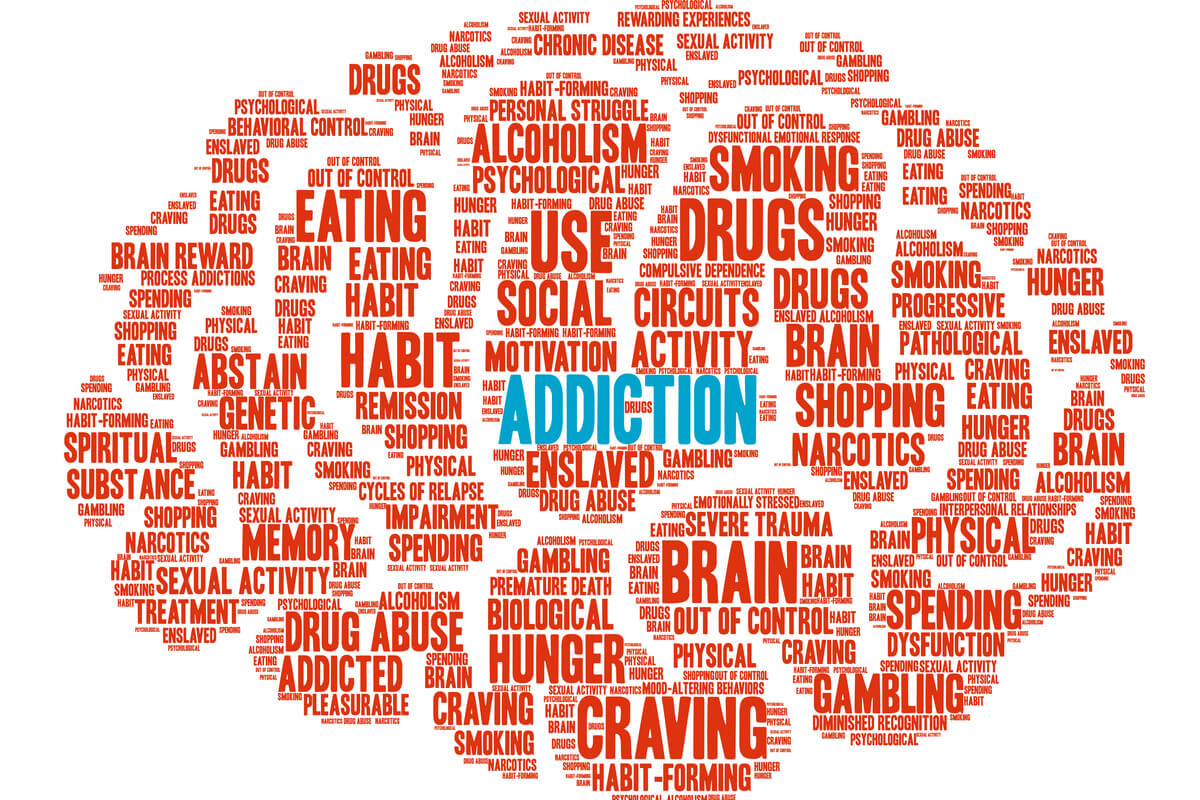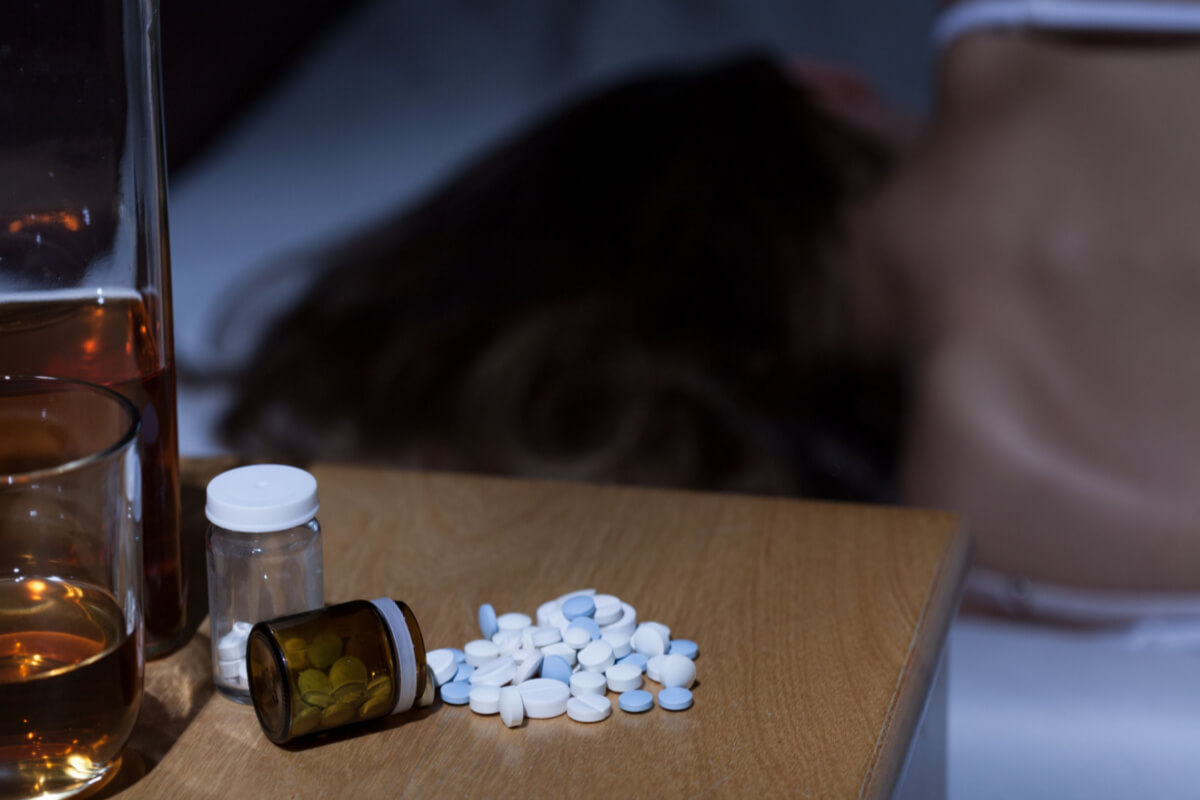
Alcohol use disorder (AUD) is a highly prevalent medical condition that is sometimes referenced as alcohol addiction or alcoholism, though these aren’t official terms.
A 2022 survey found that 28.8 million adults ages 18 and older had AUD in 2021, which represented 11.2% of the age group. Among adolescents ages 12 to 17, 2.9% had AUD in that same period.[1]
Alcohol can be a destructive drug when misused. It’s important to recognize the signs of AUD and seek treatment as soon as there is evidence that there might be a problem. Early intervention results in better long-term outcomes for AUD.[2]
What Is an AUD Diagnosis?
An AUD diagnosis is an assessment by a medical professional that a patient has AUD.
AUD exists on a spectrum, rated from mild to severe.[1] The more severe a person’s AUD, the more destructive their drinking. It will sometimes be obvious to a layperson whether they have AUD even without a diagnosis, but it’s helpful to still seek one. A professional diagnosis will make it easier to seek further help, and it’s often required for insurance coverage for treatment.
Broadly, AUD is usually diagnosed by assessing one’s relationship with alcohol and how it might be impacting their life. The more frequently and heavier one drinks, especially if a person feels they’ve lost control, the more likely it is that they have AUD. A person who frequently misuses alcohol doesn’t necessarily have AUD, but it can be one sign of the condition.[3]
Common Diagnostic Criteria for AUD
Healthcare professionals will commonly ask eleven questions to determine if a person has AUD and to what severity. The chart below lists these questions:[3]
| AUD Diagnostic Questions |
| In the past year, have you: |
| Drank more or longer than you intended to drink? |
| Want to reduce your drinking but have been unable to do so? |
| Spent a lot of time drinking or hungover after drinking? |
| Been unable to focus on anything other than drinking? |
| Had relationship, job, school or other life issues related to your drinking? |
| Kept drinking even though it was causing issues with family and friends? |
| Stopped participating, or reduced participation, in activities you used to enjoy to drink instead? |
| Engaged in risky behavior because of drinking, such as being in dangerous situations like getting in a car after drinking? |
| Kept drinking even if it increased medical or mental health issues, such as depression? Continued to drink after blacking out at some point? |
| Had to increase the amount you drink to feel the same effects from drinking? |
| Experienced withdrawal symptoms when you weren’t able to drink, such as nausea, sleep issues or anxiety? |
These questions come from the fifth edition of the Diagnostic and Statistical Manual of Mental Disorders (DSM–5). The DSM-5 (or at least a text revision of the manual, the DSM-5-TR) is the most current manual of its kind produced by the American Psychiatric Association.
Understanding the AUD Diagnosis Process
The diagnosis process for AUD incorporates various tools, such as these:
Medical Evaluation
To get an AUD diagnosis, you will need to talk to a medical professional. Typically, the best way to do this is to talk with an addiction treatment specialist specifically, as they are experts in identifying and treating AUD. However, other mental health professionals can likely also provide you with a diagnosis.
It’s important to be honest when being assessed for AUD. These professionals aren’t there to judge you. They aim to identify the problems you’re having and help get you treatment. Hiding or misrepresenting your drinking might skew their diagnosis and could prevent you from getting the help that would most benefit you.
Assessing Co-Occurring Mental Health Conditions
Many mental health conditions commonly co-occur with AUD and may complicate a proper AUD diagnosis. It’s important to work with a mental health professional to also identify any other mental health issues you may have. This will make sure your diagnosis is more accurate and also help you get all the help you need.
While AUD may be your most pressing concern, other mental health problems can contribute to AUD and also just lower your overall quality of life. If only your alcohol misuse issue is addressed, relapse is more likely until other co-occurring issues are also treated.
Screening Tools
The CAGE Questionnaire is a common screening tool used to identify if a person may have problems with alcohol and warrants further questioning. These questions are as follows:[4]
- Have you ever felt you should Cut down on your drinking?
- Have people Annoyed you by criticizing your drinking?
- Have you ever felt bad or Guilty about your drinking?
- Have you ever had a drink first thing in the morning to steady your nerves or to get rid of a hangover (Eye opener)?
A score of 2 or greater on the questionnaire (with an answer of “yes” adding one to a person’s total and “no” adding zero) is considered clinically significant.
A doctor can then use the deeper questions from the DSM-5, discussed earlier, if they deem it necessary to further check if a person might qualify as having AUD.
Assessment Interviews
Comprehensive assessments and interviews with healthcare professionals are the primary way to verify whether a person has AUD, to what severity and how best to help them. AUD is a mental health condition. While doctors can perform some tests to see if a person’s body may be suffering the effects of long-term alcohol misuse, it takes direct questioning and honest answers from a patient to learn what a doctor needs to know about their life, habits and thought processes.
Many people find this kind of questioning uncomfortable. It can feel strange to tell a doctor about the darker, more difficult aspects of yourself. However, it’s important that you give full, honest answers.
Remember that a doctor is a professional and cannot share most details a patient shares with them due to doctor–patient privilege. The few exceptions mostly have to do with whether you express that you actively intend to harm yourself or someone else. Their questions aren’t to pry. They’re to start understanding exactly what you’re going through, so you can get better.
Seeking Help for AUD
While AUD is a chronic condition, you can get better. Treatment can help you to manage AUD, avoid relapse and embrace a healthy life in recovery.
Importance of Early Intervention
While it’s never too late to get help, it’s most beneficial to seek treatment for AUD at an early stage. Alcohol misuse can often lead to a destructive downward spiral.
As misuse causes health to deteriorate and strains important relationships, life can get immensely stressful. This can push a person to drink even more, causing more harm to their health and relationships, and so on. Quitting alcohol use also tends to get harder the more one drinks, in large part due to how difficult alcohol withdrawal can be.
Less than 10% of people with past-year AUD receive any treatment, which is unfortunate because addiction recovery is often difficult without professional help.[5] Even if you feel you don’t need help to recover from AUD, you should seek it. It will improve your chances of a successful, long-term recovery.
Treatment Options
AUD is typically treated with a combination of approaches. Therapy, especially cognitive behavioral therapy, is often used to help a person better understand their relationship with alcohol and readjust how they think about the substance. Counseling can help a person set goals for themselves based on their current challenges, with the aim of achieving steady progress even if they still struggle with alcohol.
Many people in recovery also attend support group meetings. In these sessions, individuals dealing with similar issues can have discussions, often guided by a professional or team leader, about their current situation, struggles and successes.
The First Step to Recovery
AUD is a serious mental health condition in which a person drinks in a self-destructive way, often while feeling that they cannot stop drinking on their own. If you believe you have AUD, seek professional help.
Once you get an official diagnosis, you can begin comprehensive treatment that can help you to safely stop drinking and build a better life without alcohol. Start the process today.

Reviewed By Peter Manza, PhD
Peter Manza, PhD received his BA in Psychology and Biology from the University of Rochester and his PhD in Integrative Neuroscience at Stony Brook University. He is currently working as a research scientist in Washington, DC. His research focuses on the role ... Read More
- Alcohol’s effects on health: Understanding alcohol use disorder. National Institute on Alcohol Abuse and Alcoholism. Accessed February 18, 2024. https://www.niaaa.nih.gov/publications/brochures-and-fact-sheets/understanding-alcohol-use-disorder. 2020. Accessed February 2024.
- Early intervention, treatment, and management of substance use disorders. Substance Abuse and Mental Health Services Administration. Published November 2019. Accessed February 18, 2024. https://www.ncbi.nlm.nih.gov/books/NBK424859/
- Alcohol use disorder: A comparison between DSM–IV and DSM–5. National Institute on Alcohol Abuse and Alcoholism. Published February 2020. Accessed February 18, 2024. https://www.niaaa.nih.gov/sites/default/files/DSMfact.pdf.
- Ewing JA. Detecting alcoholism; The CAGE questionnaire. JAMA. Published 1968. Accessed March 23, 2024. https://pubmed.ncbi.nlm.nih.gov/6471323/
- Alcohol treatment in the United States. National Institute on Alcohol Abuse and Alcoholism. Published 2024. Accessed February 18, 2024. https://www.niaaa.nih.gov/alcohols-effects-health/alcohol-topics/alcohol-facts-and-statistics/alcohol-treatment-united-states
Download Our Free Program Guide
Learn about our program, its effectiveness and what to expect
Related articles
Imagine what’s possible on the other side of opioid use disorder.
Our science-backed approach boasts 95% of patients reporting no withdrawal symptoms at 7 days. We can help you achieve easier days and a happier future.









